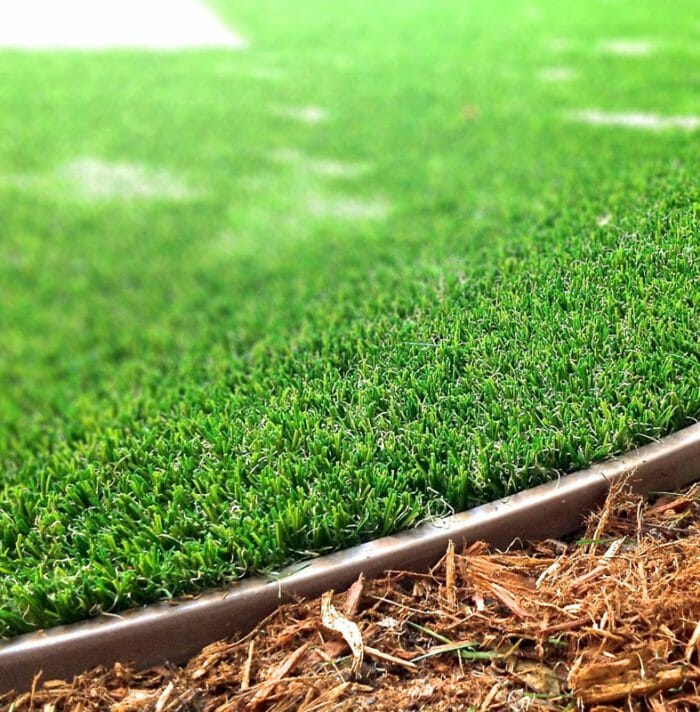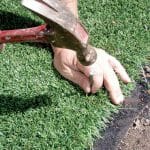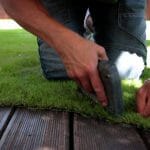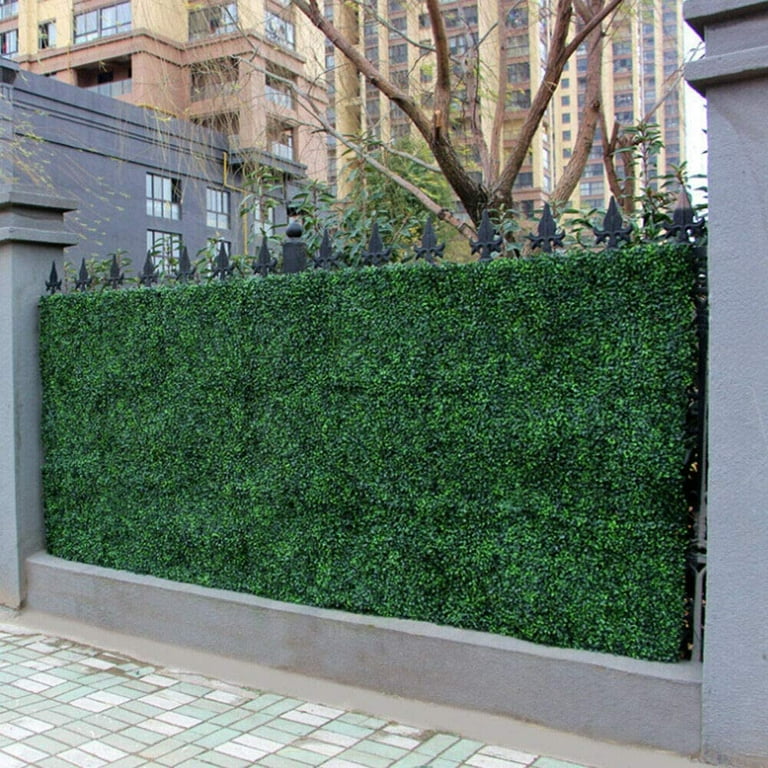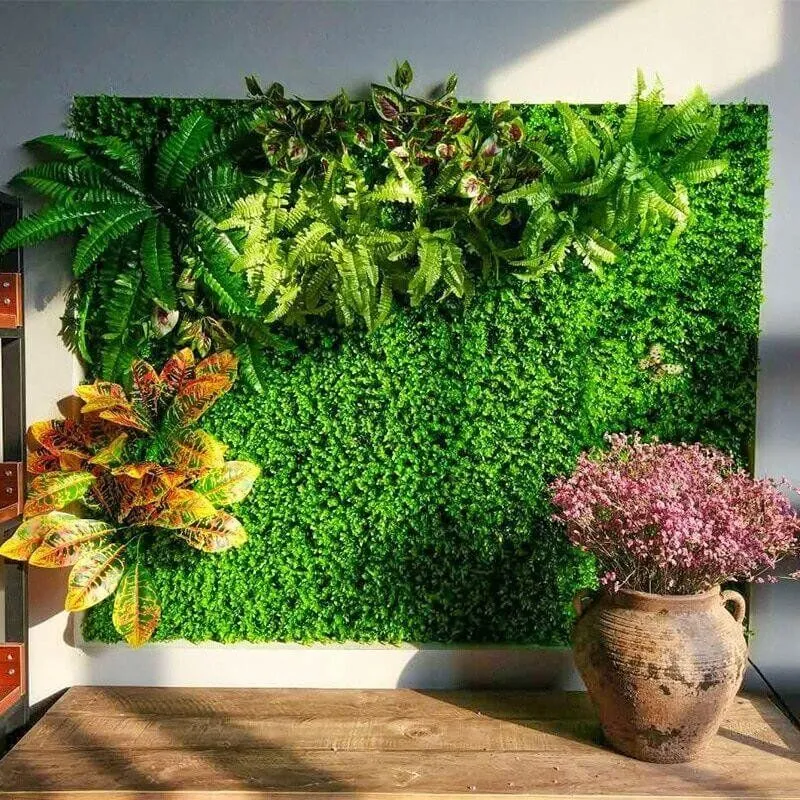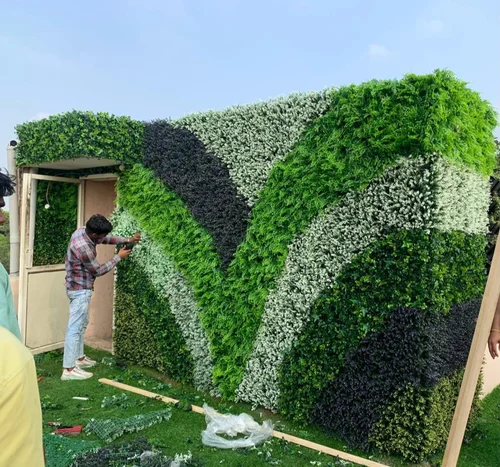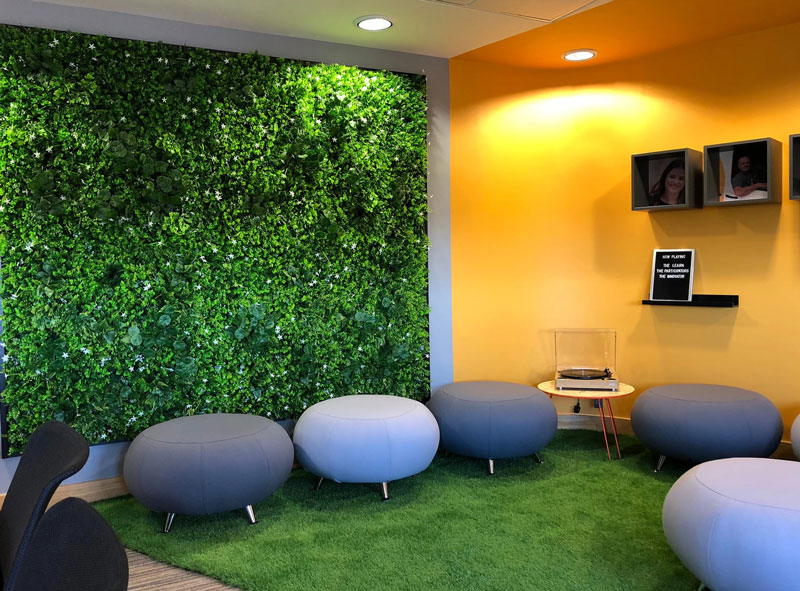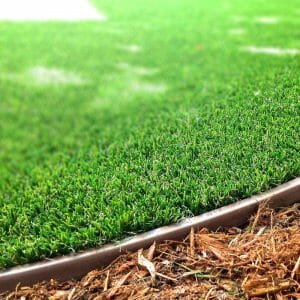
Securing the edges of artificial grass is essential to ensure it remains in place and looks well-maintained. Here’s how to secure the edges of artificial grass:
Materials You’ll Need:
– Artificial grass
– Bender board, timber, or metal landscape edging
– Ground anchors or U-shaped pins
– Nails or screws
– Adhesive (optional)
– Sand infill (optional)
Steps:
1. Prepare the Base:
Before securing the edges, make sure you have properly prepared the base where you’ve laid the artificial grass. The base should be compacted, level, and free of any debris, rocks, or weeds.
2. Lay the Edging Material:
Choose your preferred edging material, such as bender board, timber, or metal landscape edging. These materials create a border around the perimeter of the artificial grass, keeping it in place. Place the edging material along the edges of your grass, ensuring it is level with the finished height of the grass. It should sit slightly above the ground to prevent weeds and turf from growing under it.
3. Secure the Edging:
Use ground anchors, U-shaped pins, nails, or screws to secure the edging material to the ground. Space these anchors or fasteners approximately every 12 inches to ensure stability. Make sure the edging material is firmly attached to the ground and the base.
4. Overlap the Joints:
If your artificial grass installation requires multiple pieces, ensure that the joints of the grass align with the edging. Overlap the grass pieces by about an inch to ensure a seamless and secure connection.
5. Seam Joints (If Necessary):
If you’re working with multiple pieces of artificial grass and need to seam them together, follow the manufacturer’s guidelines for adhesive application. Apply adhesive to the seam tape or glue provided and join the pieces of turf. Ensure a snug fit with no gaps.
6. Infill (Optional):
Some artificial grass installations may benefit from infill sand to help secure the edges. This adds weight and stability. Spread infill evenly along the edges and brush it into the turf fibers using a stiff broom. It will help the grass stay in place and maintain a neat appearance.
7. Brush and Compact:
After securing the edges and adding any necessary infill, use a stiff brush or broom to brush the grass fibers against the grain. This will help the blades stand up and ensure an even appearance.
8. Regular Maintenance:
To keep your artificial grass looking its best, regularly inspect the edges for any signs of lifting or movement. If you notice any issues, re-secure the edges as needed.
Here are some tips to properly secure artificial grass edges:
– Bury edges in a perimeter trench around the lawn dug 6-8 inches deep, backfilled partially with gravel for stability and drainage.
– Use landscaping staples every 4-6 inches along edges, hammering them at an angle through buried edge and into soil for a tight hold.
– Nail sturdy wooden stakes periodically around the inside perimeter to tie interior turf to, preventing shrinkage over time.
– Apply seam tape, liquid turf glue or silicone caulk along any seams where two edges meet for adhesion and to prevent detachment.
– On hard surfaces, use exterior-grade construction adhesive made for artificial turf rather than staples to glue grass right to concrete, pavers or wood.
– Weight edges for the first 24 hours until adhesives cure fully to prevent lifting. Use boards, sandbags or cinder blocks.
– Along straight edges, install plastic, metal or concrete commercial landscape edging nailed vertically into the ground to box in grass.
– If laying turf over existing lawn, dig a border trench to insert horizontal plastic lumber edging to separate grasses.
Properly securing the edges of artificial grass is crucial for maintaining the appearance and longevity of your artificial lawn. Whether you’re using edging materials, adhesive, or infill, ensure that the grass is tightly anchored along the edges and free of wrinkles or folds. Regular maintenance, including brushing to keep the blades upright, will also help maintain your artificial lawn’s appearance.


